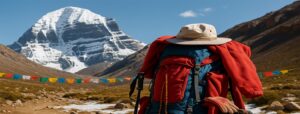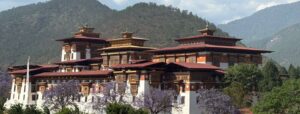Among Nepal’s various ethnic groups, the Gurung people known as an ancient community, are typically found in hilly and mountainous regions and are considered to be descendants of the Gurkha. The Gurung people are mongoloid people who trace their ancestry to Tibet.
Demography
The 1981 Nepal census reported there were 1,74,464 Gurung speakers in Nepal, making up 1.2 percent of the country’s total population.
It reflects a smaller number of Gurung people exist since they indicate only those who named Gurung as their mother tongue and not all Gurung speak the Gurung language.
Also Read: Kirat People Of Nepal
The census shows Gurung to be mostly found in the districts of Lamjung, Syangja, Kaski, Gorkha, Tanahu, Parbat, and Manang in the Gandaki zone.
Migration of the Gurung People
They were said to be they were migrated from Tibet many years ago. Gurung people migrated from the Northern part of Nepal around the 6th century and they settled around the lap of Annapurna and Lamjung Himalayas between the Budhi Gandaki River in the east and Kaligandaki River in the west.
History of Gurung
Gurung legends describe a “GHALE RAJA” a king who ruled the Gurungs in the ancient period. He was overthrown by the Nepali Raja of a neighboring territory in the 15th century. By the 16th century, the Khasa kings of the Shah family had control of most of the principalities that make up present-day Nepal.
Gurungs acted as professional soldiers in Khasa armies, including those of Prithvi Narayan Shah. The ancestors of the present king of Nepal completed the unification of the kingdom of Nepal when he controlled the Kathmandu valley in 1769.
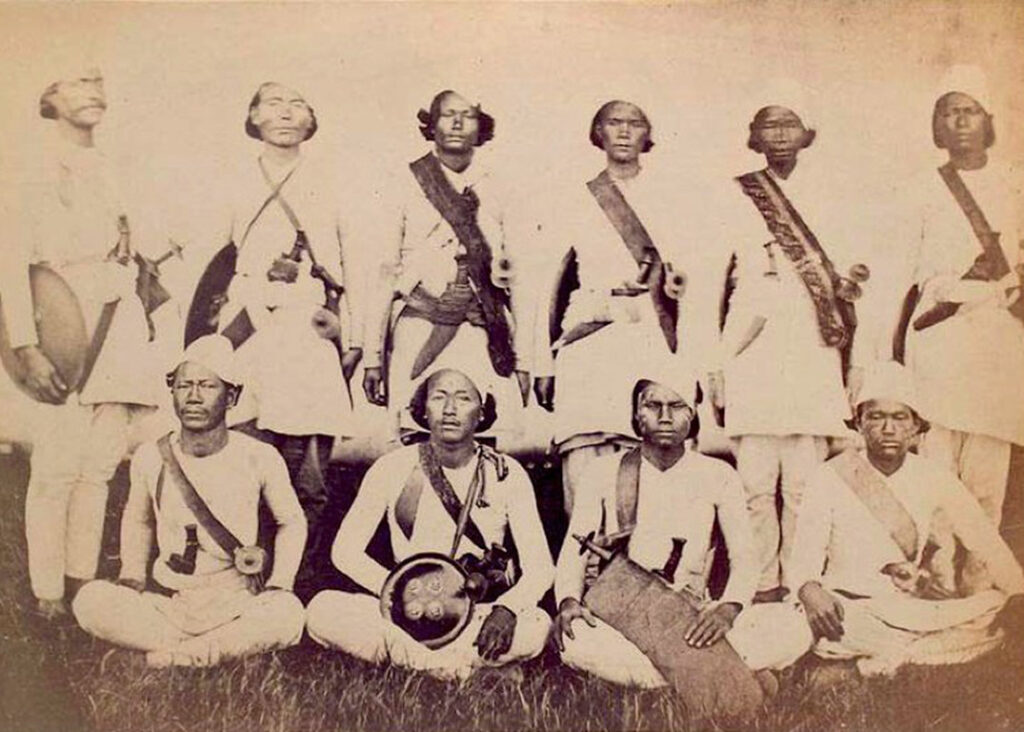
Because of their services, Gurungs enjoyed relatively high status in the new kingdom. They continued the soldiers and in the 19th century, the Nepalese government signed a treaty allowing the British army to recruit them and the other natives of the hills people including Gurungs into the Gorkha regiments in which they continued to serve.
Gurung People Culture and Traditions
Gurung possess a rich cultural heritage and their traditional customs, traditions, and way of living life are steeped in the local culture. They are highly aware of the social norms and cultural values of people around them.
Let’s take a look into the amazing culture and traditions of the Gurung people, exploring their festivals, languages, and more.
Languages and festival
Gurung people used to speak their language which is called Sino- Tibetan-Based language. along with their language, they also speak Nepali. Gurung people used to follow the Buddhist lifestyle and culture.
The Tamu Lhosar is one of their main festivals which is the new year of Buddhist religion.
You may also like: All About Pokhara Street Festival
Tamu lhosar is the most significant annual celebration of the Gurung community. It is celebrated on the 15th poush (December/ January) of the Nepali calendar. The festivals are celebrated by performing rituals and prayers, celebrating with friends and family, singing folk songs and dances, and more. It is a festival of prosperity and fertility which is celebrated for the preservation and the promotion of the Gurung community.
Religious Beliefs of Gurung People
Gurung practices from Tibetan Buddhism were strongly influenced by the pre-Buddhist religion of Tibet. They observed major Hindu festivals such as Dashain. They believe in some beliefs of Buddhism and Hinduism, such as karma, yet they have a set of beliefs about an afterlife in the land of the ancestor and in local deities that are especially Gurung.
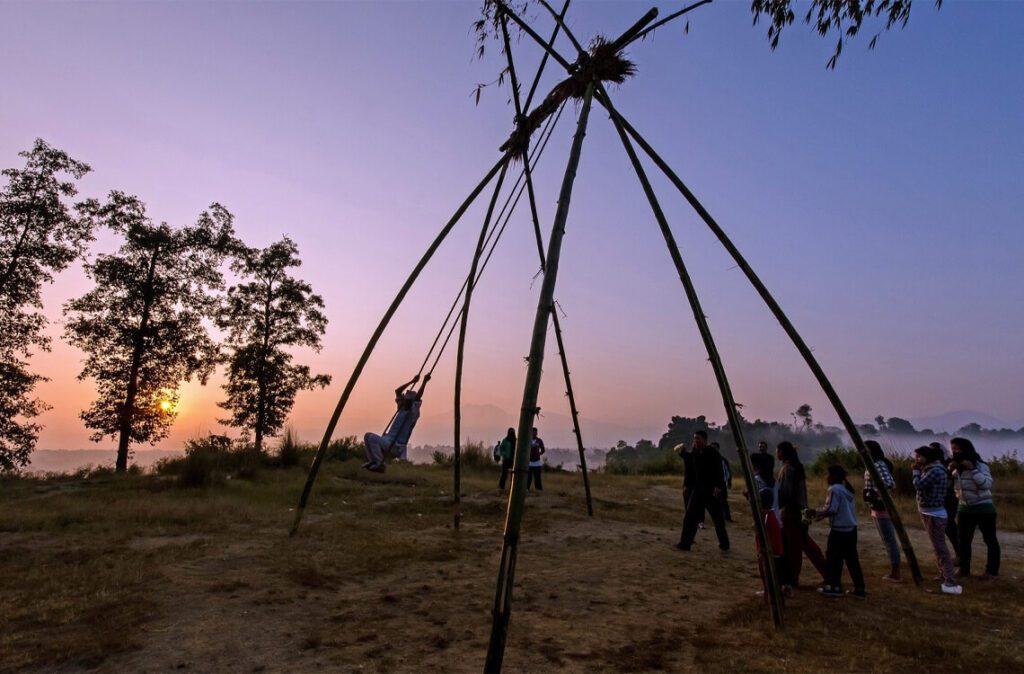
They believed that supernatural forest creatures and by variety of shadowy spirits used to settle in their area. Some of these exist in and of themselves too. they said that they are the spirits of humans who have died violent deaths. The locality believed in the major Hindu god and goddess and the buddha and bodhisattvas but particular villages have their deities which are felt to be especially powerful in their immediate surroundings.
Marriages
Cross-cousin marriage is preferred among Gurungs. The term cross-cousin marriage means when individuals marry their second-degree cousins, which means they marry the son/daughter of their father’s/mother’s siblings. It is a major tradition part of the Gurung community.
Customs and ornaments
The traditional dress Gurung men wear a short shirt like a blouse called Daura tied across the front, a short skirt called Kachhad wrapped between the hips or chest and tied by a wide belt called Patuka, and a typical hat called Topi on the head.
For the women wear almost like a sari which is a little dark and printed called Chhitko Gunyu tied by a wide belt, a blouse tied across the front, and a little thicker shawl called kramu or Barko made of special material called Malena.
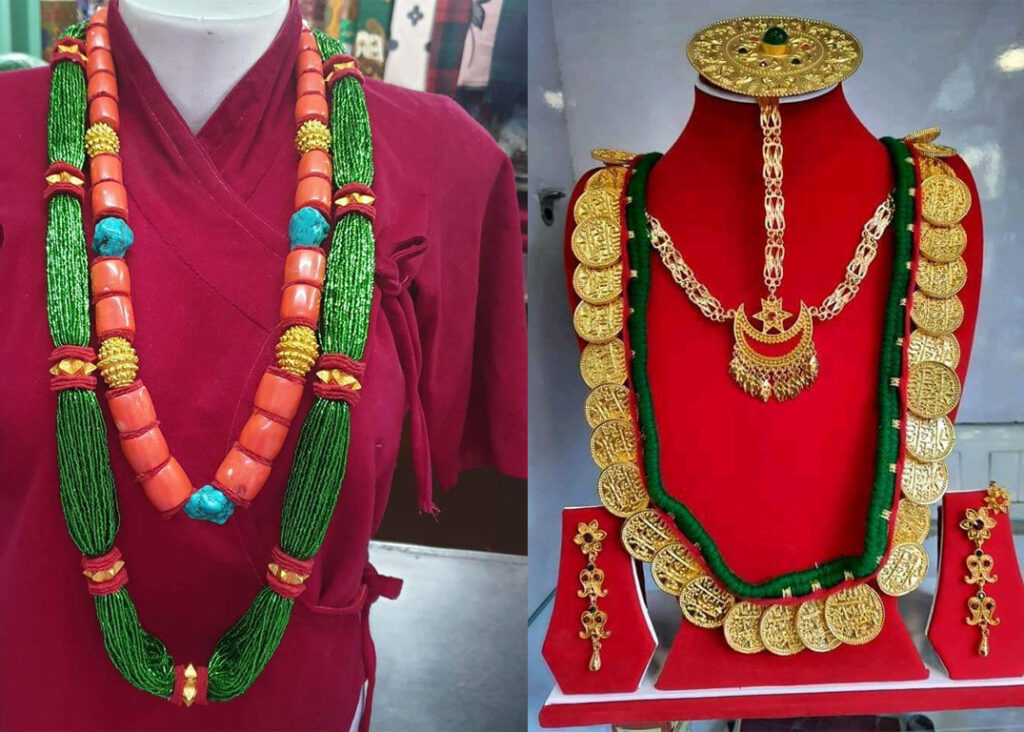
Gurung people used to wear traditional items called ‘Bakhu’ which is made from sheep’s wool. It protects from the cold and rain also it is made as a mat or sleeping cover.
They wear ornaments earrings and nose rings, coral, Shirbandi-like crowns, and golden necklaces which their husbands give during the time of their marriage, and other ornaments depending on their wealth.
Gurung People Cuisine
Sel-roti is the main best-known dish served by Gurungs. It is a circular lightly sweetened doughnut. It is deep-fired in alike deep iron pan after hand-mixing rice flour, ground rice, milk, butter, and sugar.
Dhido is a traditional dish prepared from ground buckwheat or millet. Any flour can be used to make Dhido. It is a mixture of hot water and ground grain. It is the best dish for those people who live in the Himalayas region.
Kodo ko Raksi (millet alcohol) is a strong drink like clear vodka or gin, usually made of kodo millet or rice. It gives different flavors. It is linked to the traditions of the Nepali indigenous community mainly served by Gurung, Magar, Rai, Limbu, Tamang, and Newar.
Also Read: Thakali People and Their Distinguish Culture
Kinema is fizz soya beans which are then dried and stored and then used to make curry, soups, and pickles.
Mohi chop is the most well-liked and famous dish in Gurung cuisine. it is seasoned with a finely ground mixture of chile, garlic, and salt. The preferred mohi for the meal is a little sour.
Gundruk is a popular dish among other ethnic cultures too. It is created by fermenting spinach in particular and drying it. Green herbs, species, and oil are used for it to make achar.
Sukuti is the most common and well-liked food for Nepalese. Sukuti made of smoked-dried buffalo meat served as a snack laden with spices and tomato sauce. It is highly served with Dhido.
The Gurung people have played a significant role in the history and culture of Nepal, and their unique traditions and way of life continue to be an integral part of the country’s rich ethnic diversity.
Need Help Planning an exciting trip?
Let our expert team at Asian Heritage Treks and Travel take care of everything — from guided tours to personalized packing tips and travel arrangements.
Plan an exciting trip





